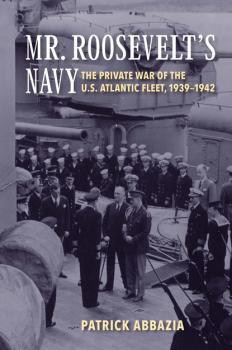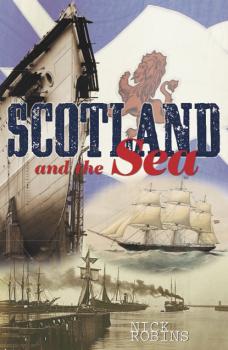Прочая образовательная литература
Различные книги в жанре Прочая образовательная литератураRough Waters
This book traces the evolution of the role of the U.S. Merchant ship flag, and the U.S. merchant fleet itself, from the earliest days of the American Republic to the present. The book shows how the protection of the U.S. flag aboard merchant ships was often the cause for U.S. naval engagements, ranging from minor incidents through full-blown, declared wars. It also spells out how in the 20th and 21st centuries, the American-owned merchant fleet has «fled» from the U.S. flag to foreign registries, under flags of convenience. Many other maritime nations have experienced the same development in recent decades, and the world-wide development of this practice, as well as measures to off-set its ill effects are examined.
The Official Chronology of the U.S. Navy in World War II
Ten years after the close of World War II, the U.S. Navy published a chronology of its operations in the war. Long out of print, the work focused on what were then defined as critical and decisive events. It ignored a multitude of combat actions as well as the loss or damage of many types of U.S. ships and craft—particularly auxiliaries, amphibious ships, and district craft—and entirely omitted the U.S. submarine campaign against Japanese shipping, This greatly expanded and updated study, now available in paperback with an index, goes far beyond the original work, drawing on information from more than forty additional years of historical research and writing. Massive, but well organized, it addresses operational aspects of the U.S. Navy’s war in every theater.
Clydebank Battlecruisers
Between 1906 and 1920 the Clydebank shipyard of John Brown & Sons built five battlecruisers, each one bigger than the last, culminating in the mighty HMS Hood, the largest warship of her day. Like most shipyards of the time, Clydebank employed professional photographers to record the whole process of construction, using large-plate cameras that produced photos of stunning clarity and detail, although very few of the images have ever been published. This pictorial collection, with its lengthy and informative captions, offers ship modelers and enthusiasts a wealth of visual information simply unobtainable elsewhere.
El Dorado Canyon
America's war on terrorism did not start on 11 September. Long before the overt war in Afghanistan and the covert war against al-Qaida, U.S. forces struck at one of the hotbeds of terrorism in the world. On 15 April 1986, in the dead of night, American strike aircraft roared into the very heart of Muammar Qaddafi's Libya, attacking carefully selected targets and nearly killing the «brother leader» himself. Code-named Operation El Dorado Canyon, the raid was in direct response to Qaddafi's support of a terrorist act against U.S. service personnel stationed in Europe and was a result of President Ronald Reagan's pledge to respond to terrorism with «swift and effective retribution.»Stanik, a retired naval officer and Middle East scholar, provides a detailed account of the raid as well as an in-depth analysis of its causes and effects. He also describes three other hostile encounters between U.S. and Libyan forces during Reagan's presidency and details U.S. covert operations. From a bombing in Berlin, West Germany, to terrorism in the skies over Lockerbie, Scotland, from the halls of power in Washington to airbases in England and the decks of American warships in the Mediterranean, Stanik has woven a truly international thriller that is all too real and forebodingly relevant to current events. A study in diplomacy, strategy, high-level policy, deck-plate operations, and the unique challenges offered by a new brand of evil, this book is required reading for a better understanding of the ongoing war on terrorism.
Nelson's Battles
From his first dramatic initiatives at the Battle of St. Vincent in 1797 to his last battle at Trafalgar in 1805, Horatio Nelson was a force to be reckoned with and a hero to his countrymen. This illuminating study of the battles that played such an important role in Napoleon's defeat also takes a close look at the admiral's art of naval warfare. It shows that Nelson was quick to adapt new ideas and technical developments. This prowess, and a remarkable ability to lead and a genius for making decisive moves, made him the consummate master of naval warfare. This newly revised edition provides the most up-to-date analysis of Nelson's victories available.
Mr. Roosevelt's Navy
The U.S. Navy was at war in the Atlantic long before 7 December 1941, but little is known about that conflict. Mr. Roosevelt’s Navy is a vivid, thoroughly researched account of this undeclared war upon which Mr. Roosevelt embarked in order to sway the desperate Battle of the Atlantic in favor of Britain’s hard-pressed Royal Navy. Not only is the book a history of the U.S. Atlantic Fleet and its impact on the German-American strategy and diplomacy prior to and immediately following American entry into World War II, but it is also a lively account of the muted battles and endless patrols that were the pattern of life for American sailors in the cold gray Atlantic.
A Tale Of Two Navies
This book describes and analyses in hitherto unexplored ways the unique relationship of the United States Navy and the Royal Navy as exemplars of the US-UK “Special Relationship” in the context of strategy, operations, technology, and intelligence. A continuous thread of 55 years of maritime strategic planning and execution is examined within the challenges and changes of a dynamic period in which the shared national self-interests and inherent values of the United States and the United Kingdom were exemplified by the United States and Royal Navies. This book is a discursive analysis of selective key themes rather than a definitive history – a discourse between the author and readers, with lessons learned – and letting the past not be prologue, rather to anticipate change and formulate future endeavors based on a didactic interchange between the past, the present, and the foreseeable future, that now witnesses the growth of Chinese naval power and the re-emergence of a Russian Navy, and other pressing serious international challenges. Political will and funding for a maritime strategy are examined in the light of past, current, and emerging threats, while not replicating in any shape or form what is easily available elsewhere. This book contributes and stimulates in the non-quantifiable domains that relate to the question why, and those themes where the author has unique knowledge and insight that offers sound guidance in hitherto unexamined and highly relevant areas that have seen little or no light, from the high level institutional and organizational aspects of political-military decision making down to the effects of hugely significant technical changes that in due course impact policy making and operations. The readers are presented with questions as this study unfolds – for example – how should we best exploit emerging technologies for the strategic and tactical benefit of both navies and that fit optimally the national security needs of the US and UK? This book is about naval thinking – its impact at every level of naval activity and interaction with national defense in its many complexities – providing a framework for thinking through where both navies need to go in the future and why, and perhaps most of all how to steer a successful course through what is often a minefield of opponents, who do not always grasp the basics of maritime strategy. The book provides thought provoking guidance and stimulation – a thoughtful dialogue with each reader to individually and collectively contribute to the debate and actions that need to be taken in order to keep both countries naval strategies deeply rooted and focused on well-reasoned fact, intellectual integrity, and rigor. This book aims to provide a bedrock experience that can help shape the future.This book is singular in its field – with new material, insights, and analysis – presented in a dialogue format to challenge the reader to think and consider – not tell – to relate the facts, analyze, and draw conclusions. However, the abiding conclusion of this book is the critical and enduring need for a US-UK joint maritime strategy now and for the future, and how this may evolve. The unique presentation of US-UK naval strategy, plans, policies, program, operations, and intelligence over the 55 year period presents the reader with new approaches and angles, particularly regarding the Special Intelligence relationship, that the two navies represent. The book exemplifies and challenges thought regarding the crown jewels of naval strategy – without hyperbole the book takes the thinking of past writers to a new level of not just information, but conceptual thinking that ensures the future need for, and dominance, of naval strategy.
Scotland and the Sea
Scotland’s maritime heritage is a highly significant one, embracing as it does a quite outstanding contribution to Britain’s development both as an empire and as the world’s leading maritime power in the nineteenth century. Scottish engineering, ship owning and operating, as well as business and entrepreneurial skills, played a major part in the success of the Merchant Navy, while Scottish emigrants took skills to every corner of the world, creating trade and wealth both abroad and at home. In terms of engineering, ‘Clyde-built’ was the Kite Mark for the shipbuilding industry the world over. Scottish shipowners included household names such as Allan, Anchor, Donaldson and Henderson, while Scotsmen were instrumental in founding and, for much of the time, managing Cunard, British India, P & O, Orient, Glen and many other ‘English’ companies. The author tells an exhilarating story of energy and inventiveness, describing the remarkable navigational skills of the highlanders and the technological and business skills of the lowlanders, and relates the early development of the steamship, the impact of emigration, the involvement with exploration and the development of trade routes, and the final flowering of the world’s last great iron sailing ships.
Wings for the Fleet
The men who ventured into the air in the Navy’s first frail aircraft were not only daring—they had vision, persistence, and a nearly unlimited determination to convince the skeptics that their frail kite-like structures could someday possess military value. This is the story of their trials, tragedies, and triumphs. They patched cooling systems with chewing gum, they lived by “crash, repair, and fly again,” but they succeeded in developing this new service into an effective arm of the fleet.Wings for the Fleet, first published in 1966, covers the fascinating details of those pioneering days from 1910 to the entry of the United States into World War I. All of the heroic “early birds” are here with full accounts of their exploits. Admiral van Deurs, himself a naval aviator since the early 1920s, has rendered a significant service by his careful preparation of this well-balanced, thoroughly illustrated historical account, which comes complete with appendixes listing early naval aviators and the planes they flew. Over one hundred photographs were selected from official and private sources to illustrate this book.









